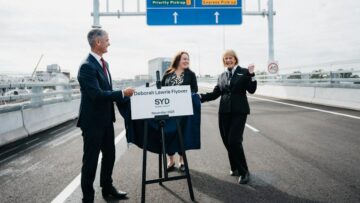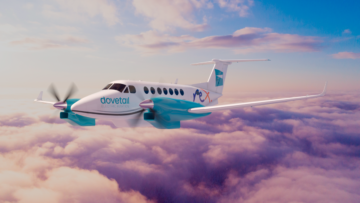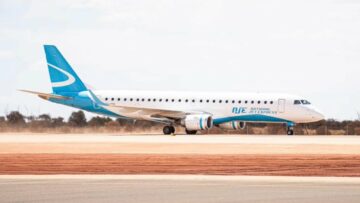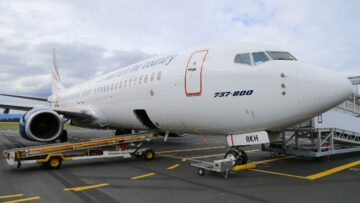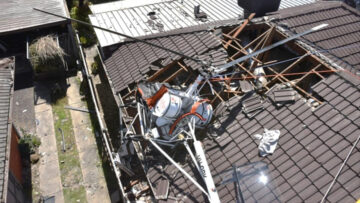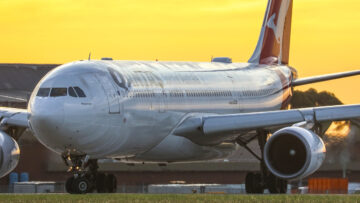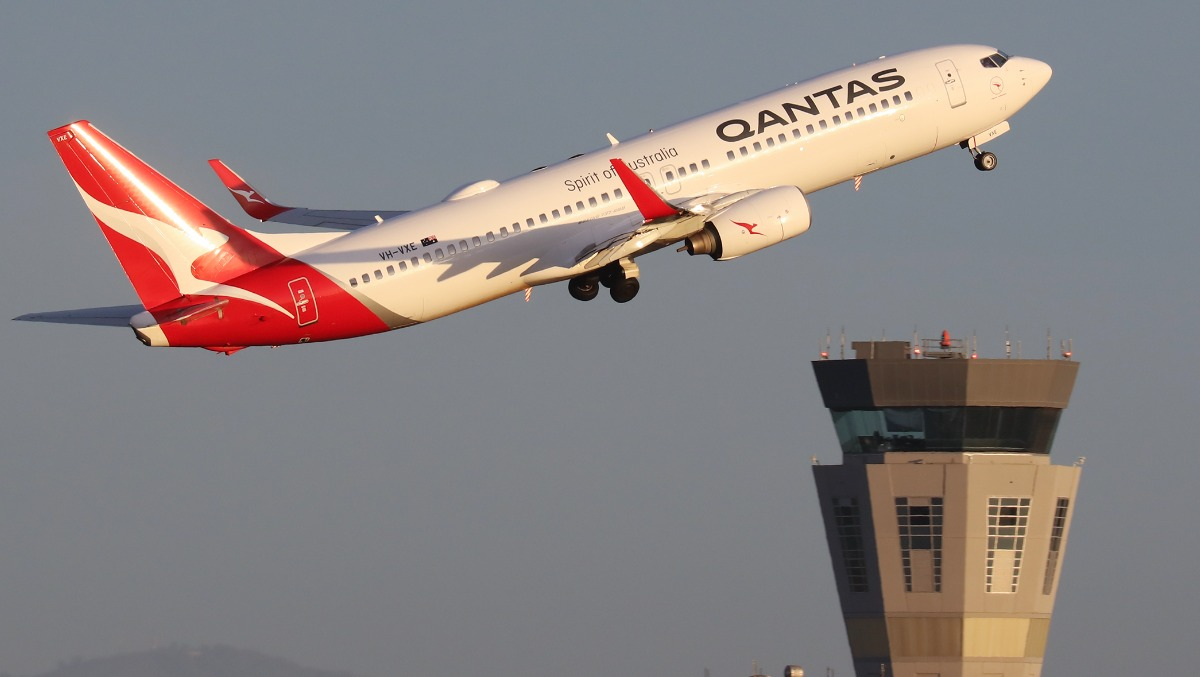
Qantas has said staff shortages at air traffic control provider Airservices had a “significant impact” on its reliability last month, after almost 30 per cent of its flights were delayed.
The intervention comes amid a row over whether or not Airservices has enough employees following hundreds of occasions over the last year where it has effectively shut down a significant portion of airspace.
Airservices claims it has 100 more air traffic controllers than it requires to operate Australia’s network and said the shutdowns were a result of a “short-term” and “unplanned” leave of controllers.
However, both air traffic control union, Civil Air, and the Australian Federation of Air Pilots (AFAP) insist there is a lack of staff.
The closure of the airspace forces aircraft to self-separate from each other and rely on radio broadcasts rather than centralised information from air traffic controllers.
Switching to TIBA — traffic information broadcasts by aircraft — leads to delays and cancellations, with Virgin’s policy not to operate in TIBA airspace when possible.
Airservices, however, insists its TIBA workaround procedure is both safe and “internationally recognised”.
New BITRE data released by the Department of Transport shows Qantas’ planes took off on time just 71 per cent of the time, down from 75 per cent in May and 77 per cent in April.
PROMOTED CONTENT
Poor performance across the board, though, meant Qantas was still the top-performing airline when including its subsidiary QantasLink.
“The performance was below Qantas’ own target of above 80 per cent, chiefly due to bad weather at major airports on 19 out of 30 days,” said the Flying Kangaroo in a statement.
“AirServices Australia staffing shortages also had a significant impact on on-time performance in June.
“Despite this, more than 94 per cent of Qantas and QantasLink flights in June took off within an hour of their scheduled departure time.
“Qantas and QantasLink also cancelled fewer flights in June with 3.7 per cent cancelled compared to its major competitor’s 4.2 per cent.”
Airservices has consistently maintained it has enough staff. The ATC operator expects around 80 new trainees will become operational in the 2024 financial year, and is recruiting a further 140 for 2025, after which it plans to recruit an extra 80–140 trainees per year.
“Airservices employs more than 900 ATCs, 97 per cent of which are in operational roles. Airservices only requires about 800 ATCs to fully staff the ATC network,” said a spokesperson for Airservices in a statement previously.
“Rosters are tight in some areas as a component of the ATC workforce are currently unavailable for operational duties. These staff are either on long-term sick leave, parental leave, training for other ATC positions, or working on a project.”
In an exclusive interview with Australian Aviation earlier this month, Captain Louise Pole, president of AFAP, and Marcus Diamond, safety and technical manager at AFAP, detailed the issues its members have encountered.
Captain Pole pointed to a survey of AFAP members that found almost 31 per cent of pilots experienced delays multiple times per month, 72 per cent reported an efficiency of flight issue due to contingency measures like TIBA, which most pilots see as unsafe and inefficient, and 15 per cent reported traffic proximity or separation issues within the last six months.
“We’ve had extensive responses from all our members around Australia that they are experiencing unforecast holding due to lack of available air traffic control staffing numbers. They’re experiencing TIBA airspace at short notice, and that’s possibly meaning flights can’t depart — and if they can depart, they’ve got quite large diversion routes required to go around that airspace,” she said.
“The vast majority of pilots have now experienced TIBA, where up until about nine months ago, most pilots didn’t even remember what the acronym meant, because it was so infrequently used.”
According to Captain Pole, the issue is getting “worse and worse” despite Airservices’ insistence that it has enough ATC staff to cover requirements.
“I have experienced that myself many times recently, where they just don’t have enough staff in certain sectors on certain days — and they don’t tell you in a lot of situations that this is happening, so you’re already airborne and then they increase holding requirements,” she said.
“For pilots, when they plan to fly from, say, Sydney to Brisbane, they know how long it’s going to take to get there. They have to carry extra fuel for certain contingencies, they always do. However, if there’s a lot of people and bags on board, or freight, they might not be able to carry much extra fuel above what is required.
“If [ATC] then suddenly puts holding on aircraft, pilots just haven’t planned for enough fuel. They end up having to divert to be able to refuel, because they can’t continue the flight with the safe fuel requirements.”
Diamond told Australian Aviation that ATC staffing issues put pilots in an “invidious position” and limit options available to them.
- SEO Powered Content & PR Distribution. Get Amplified Today.
- PlatoData.Network Vertical Generative Ai. Empower Yourself. Access Here.
- PlatoAiStream. Web3 Intelligence. Knowledge Amplified. Access Here.
- PlatoESG. Automotive / EVs, Carbon, CleanTech, Energy, Environment, Solar, Waste Management. Access Here.
- BlockOffsets. Modernizing Environmental Offset Ownership. Access Here.
- Source: https://australianaviation.com.au/2023/07/qantas-latest-to-say-atc-staff-shortages-led-to-delays/
- :has
- :is
- :not
- :where
- $UP
- 15%
- 19
- 2024
- 2025
- 30
- 31
- 7
- 72
- 80
- a
- Able
- About
- above
- across
- After
- ago
- AIR
- aircraft
- airline
- Airports
- airspace
- All
- already
- also
- always
- Amid
- an
- and
- ARE
- areas
- around
- AS
- At
- Australia
- Australian
- Australian Aviation
- available
- aviation
- Bad
- bags
- BE
- because
- become
- below
- board
- both
- Brisbane
- by
- CAN
- carry
- centralised
- certain
- claims
- closure
- COM
- comes
- compared
- component
- continue
- control
- cover
- Currently
- data
- Days
- Delayed
- delays
- Department
- detailed
- Diamond
- Diversion
- do
- Dont
- down
- due
- each
- Earlier
- effectively
- efficiency
- either
- employees
- employs
- end
- enough
- Even
- Exclusive
- expects
- experienced
- experiencing
- extensive
- extra
- Federation
- fewer
- financial
- flight
- Flights
- flying
- following
- For
- Forces
- found
- freight
- from
- Fuel
- fully
- further
- get
- getting
- Go
- going
- had
- Happening
- Have
- having
- holding
- hour
- How
- However
- HTTPS
- Hundreds
- if
- Impact
- in
- Including
- Increase
- inefficient
- information
- intervention
- Interview
- issue
- issues
- IT
- ITS
- jpg
- june
- just
- Know
- Lack
- large
- Last
- Last Year
- latest
- Leads
- Leave
- Led
- like
- LIMIT
- Long
- long-term
- Lot
- major
- Majority
- manager
- many
- Marcus
- meaning
- meant
- measures
- Members
- might
- Month
- months
- more
- most
- much
- multiple
- network
- New
- Notice..
- now
- numbers
- occasions
- of
- off
- on
- only
- operate
- operational
- operator
- Options
- or
- Other
- our
- out
- over
- own
- People
- per
- performance
- Pilots
- plan
- Planes
- planned
- plans
- plato
- Plato Data Intelligence
- PlatoData
- policy
- positions
- possible
- possibly
- president
- previously
- procedure
- project
- provider
- put
- Puts
- Radio
- rather
- recently
- recruit
- recruiting
- released
- reliability
- rely
- remember
- Reported
- required
- Requirements
- requires
- responses
- result
- roles
- routes
- ROW
- safe
- Safety
- Said
- say
- scheduled
- Sectors
- see
- she
- Short
- shortages
- Shows
- Shut down
- shutdowns
- significant
- situations
- SIX
- Six months
- So
- some
- spokesperson
- Staff
- staffing
- Statement
- Still
- subsidiary
- Survey
- sydney
- Take
- Target
- Technical
- tell
- than
- that
- The
- their
- Them
- then
- There.
- These
- they
- this
- though?
- time
- times
- to
- took
- traffic
- Training
- transport
- until
- used
- Vast
- was
- Weather
- were
- What
- What is
- when
- whether
- which
- will
- with
- within
- Workforce
- working
- year
- you
- zephyrnet


